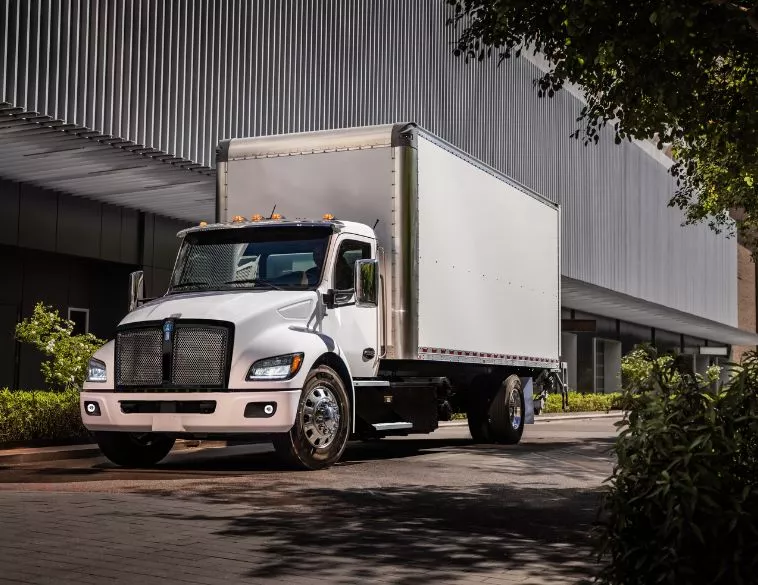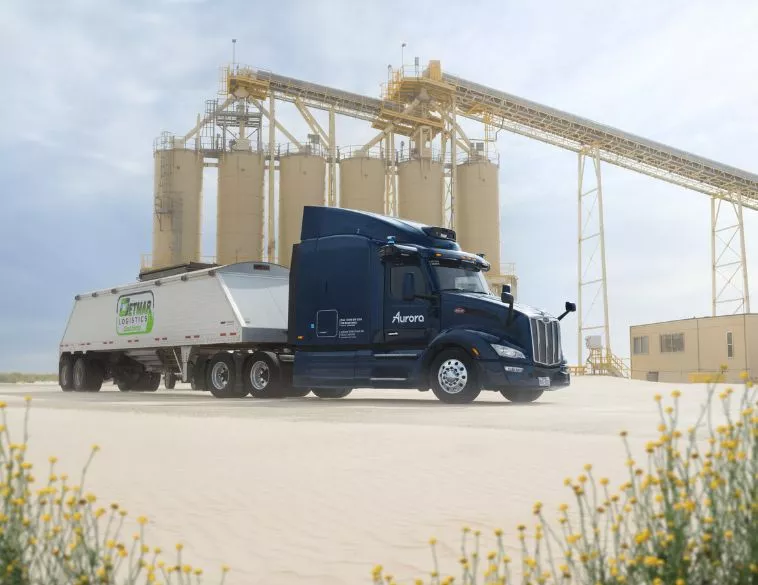Plug & Play CUV and Compact SUV Options
These small, fuel-efficient models might be just right for your fleet
Most hybrids come by their popularity honestly: Their gas-electric operation improves their fuel consumption, and they handle themselves well in everyday traffic. Combine that powertrain with a compact SUV, and you have a light-duty vehicle that will work well for many fleets.
Our list includes hybrids and plug-in hybrids (PHEVs). These can be plugged in and charged to provide a range of electric-only driving. Once that depletes, they automatically revert to self-charging gas-electric hybrid operation. Unlike a fully electric vehicle, a PHEV will continue to drive for as long as there’s gas in the tank.
While hybrids can be pricier than comparable gasoline-only vehicles, they may make up the difference with their fuel savings. Our power numbers are for combined gasoline and electric, and cargo capacity is the range with the rear seats upright and folded down.
Ford Escape Hybrid/PHEV
The Ford Escape offers an optional hybrid powertrain on all but its lowest trim level, while the PHEV is a stand-alone model. There are no major changes for 2025, other than some new features including a space-saver spare tire in place of a sealant kit. The Escape Hybrid is available in FWD or AWD, while the PHEV is front-wheel only.
The Specs:
2.5-litre I4: 163 hp/155 torque (Hybrid); 210 hp/155 torque (PHEV)
Fuel Economy, L/100 km: 5.6 city, 6.5 highway, 6.0 combined (Hybrid); 5.6 city, 6.3 highway, 5.9 combined (PHEV)
PHEV Battery-Only Range: 60 km
Cargo Capacity: 1,062 – 1,862 litres
Towing Capacity: 1,500 lbs
Hyundai Tucson Hybrid/PHEV
The Tucson gets a major update for 2025. Its powertrain carries over unchanged, but it gets new exterior and interior styling, along with upgrades such as a 12.3-inch centre touchscreen and new gearshift selector. While much of it goes higher-tech, the climate controls are now dials, which can reduce distraction. The hybrid powertrain is available in the Tucson’s top N Line and Ultimate trims. The PHEV is a further option on the Ultimate; and all are AWD.
The Specs:
1.6-litre turbocharged I4: 231 hp/258 torque (Hybrid); 268 hp/258 torque (PHEV)
Fuel Economy, L/100 km: 6.3 city, 6.6 highway, 6.4 combined (Hybrid); 6.7 city, 6.8 highway, 6.7 combined (PHEV)
PHEV Battery-Only Range: 51 km
Cargo Capacity: 1,097 – 2,108 litres (Hybrid); 902 – 1,876 litres (PHEV)
Towing Capacity: 2,000 lbs
Kia Sportage Hybrid/PHEV
The Kia Sportage is a mechanical sibling to the Hyundai Tucson, save for slight differences in engine power, but got a redesign in 2023 and so it’s unchanged for 2025. Like the Tucson, the Sportage starts out with a gas-only version; but from there, the Sportage’s Hybrid and PHEV models each come in two trim levels. All are standard with AWD.
The Specs:
1.6-litre turbocharged I4: 227 hp/258 torque (Hybrid); 261 hp/258 torque (PHEV)
Fuel Economy, L/100 km: 6.1 city, 6.3 highway, 6.2 combined (Hybrid); 6.6 city, 6.7 highway, 6.7 combined (PHEV)
PHEV Battery-Only Range: 55 km
Cargo Capacity: 977 – 1,855 litres
Towing Capacity: 2,000 lbs
Mazda CX-50 Hybrid
While the gas-only CX-50 has been around for a while, a hybrid version is an all-new addition for 2025. It’s built in the same Toyota-Mazda joint facility in Alabama as the Corolla Cross Hybrid, and the CX-50’s hybrid powertrain is sourced from Toyota. It comes in three trim levels and AWD is standard on all trims.
The Specs:
2.5-litre I4: 219 hp/163 torque
Fuel Economy, L/100 km: 6.1 city, 6.4 highway, 6.2 combined
Cargo Capacity: 826 – 1,595 litres
Towing Capacity: 1,500 lbs
Mitsubishi Outlander PHEV
The Outlander is one of the few mainstream models that comes in gasoline-only or PHEV, with no hybrid. For 2025, it adds a new mid-level SE trim. All trims are AWD. In addition to electric operation on the stored charge, it can operate in parallel hybrid mode, where the engine powers the front wheels with electric assist; or in series hybrid mode, where the engine acts as a generator to provide electricity to the electric motors. Unusually for a PHEV, it can be fast-charged.
The Specs:
2.4-litre I4: 248 hp/332 torque
Fuel Economy, L/100 km: 9.2 city, 8.7 highway, 9.0 combined
PHEV Battery-Only Range: 61 km
Cargo Capacity: 362 – 1,832 litres
Towing Capacity: 1,500 lbs
Subaru Forester e-Boxer Hybrid
The Forester e-Boxer Hybrid is an all-new model for 2025, and the top model in the otherwise-gas-only Forester lineup. Its all-new hybrid system was developed by Subaru using hybrid components from Toyota, and with Subaru’s standard AWD system. Expect to see this hybrid powertrain in an upcoming all-new Subaru Crosstrek, too.
The Specs:
2.5-litre flat-four: 194 hp/199 torque
Fuel Economy, L/100 km: 6.8 city, 7.0 highway, 6.9 combined
Cargo Capacity: 779 – 1,957 litres
Towing Capacity: 1,500 lbs
Toyota Corolla Cross Hybrid
The Corolla Cross was originally introduced to replace the C-HR subcompact SUV, and then added a hybrid version for 2023. It’s unchanged for 2025. It comes in two trim levels and with standard AWD. It’s built on the same architecture as the Corolla sedan, and in the joint Toyota-Mazda plant that also builds the Mazda CX-50 Hybrid.
The Specs:
2.0-litre I4: 196 hp/139 torque
Fuel Economy, L/100 km: 5.2 city, 6.2 highway, 5.6 combined
Cargo Capacity: 609 – 1,750 litres
Towing Capacity: 1,500 lbs
Toyota RAV4/PHEV
The RAV4 is Toyota’s top-selling vehicle in Canada. It’s mostly unchanged for 2025, except that the plug-in model was previously the RAV4 Prime and is now called the RAV4 PHEV. The RAV4 Hybrid comes in five trims, while the Prime is available in two. Both versions come standard with AWD.
The Specs:
2.5-litre I4: 219 hp/163 torque (Hybrid); 300 hp/165 torque (PHEV)
Fuel Economy, L/100 km: 5.8 city, 6.3 highway, 6.0 combined (Hybrid); 5.7 city, 6.4 highway, 6.0 combined (PHEV)
PHEV Battery-Only Range: 68 km
Cargo Capacity: 1,059 – 1,977 litres (Hybrid); 949 – 1,977 litres (PHEV)
Towing Capacity: 1,750 lbs (Hybrid); 2,500 lbs (PHEV)
Volvo XC60 PHEV
Volvo’s XC60 also comes as a mild hybrid, which uses an electric motor to assist the gas engine but can’t drive on electricity alone; but here we’re looking at its plug-in sibling. It’s the sportiest and most powerful on the list, with standard AWD and with a premium cabin and features across its four trim levels.
The Specs:
2.0-litre turbocharged I4: 455 hp/523 torque
Fuel Economy, L/100 km: 8.5 city, 8.5 highway, 8.5 combined
PHEV Battery-Only Range: 58 km
Cargo Capacity: 468 – 1,395 litres
Towing Capacity: 3,483 lbs






